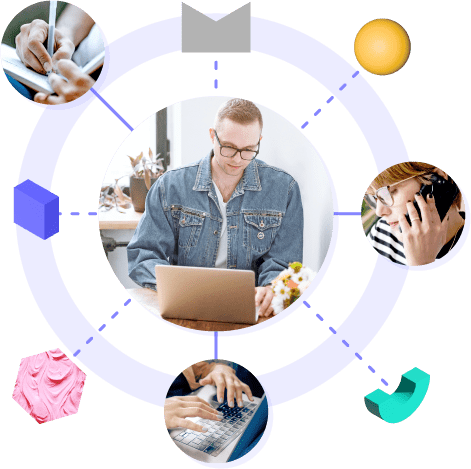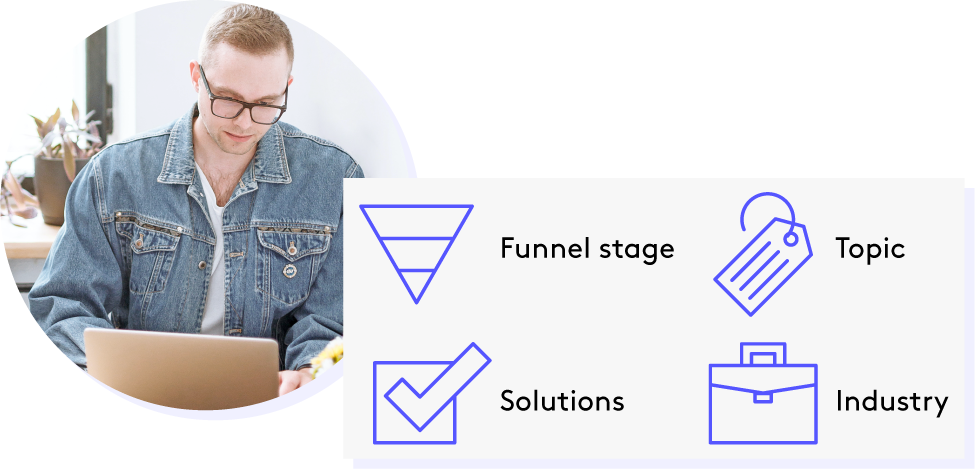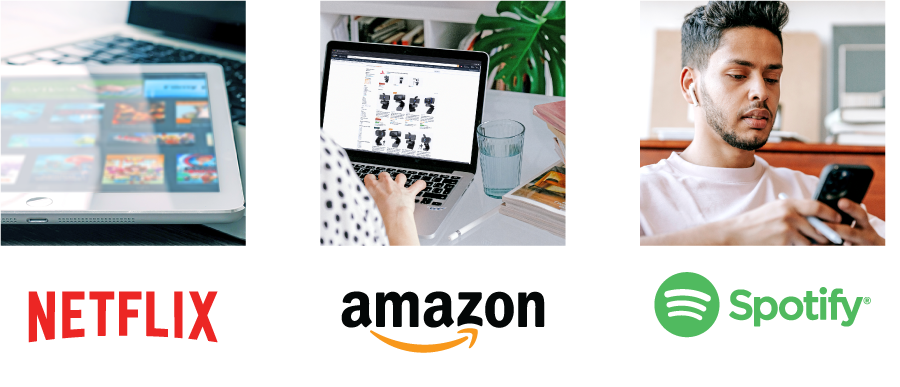Level-Up Your B2B Omni-channel Nurture Strategy

B2B companies know their nurture strategies need to adapt. Gone are the days of rolling out a few campaigns a year, assuming people will fill out your lead-gen forms, and then hoping a few of those leads eventually schedule demos. Modern B2B buyers are looking for rich and relevant content experiences that make it easy to self-serve and find the information they need.
How did we get here?
Because today’s B2B buyers have been trained by B2C brands such as Netflix, Amazon, and Spotify and expect that kind of experience in every interaction—yes, even at work. But providing a personalized content experience is difficult without the right technology and data. It’s nearly impossible to identify key buyers and accounts while serving up the right content. This is especially true when you start scaling efforts beyond email to paid ads, social media, and targeted ABM programs. Instead, it’s time to start thinking about how you can nurture your audience on every channel, at their own pace.
Omni-channel
Refers to the seamless integration of various online and offline touchpoints as consumers move down the sales funnel. Examples can include: customer service, events, websites, sponsorships, and advertisements (among others).
—
Next-level nurture with content intelligence

The most basic nurture programs are built to do two things: capture leads, and get those leads into a funnel so you can start keeping tabs on your pipeline. Once a person fills out your form they’ll start seeing content that, based on the limited knowledge you have on them, you believe is relevant and will provide enough information to help them make a purchase. If they’re at the top of the funnel, maybe they’ll be served up a short blog post about what your product does; if they’re at the bottom of the funnel, they might see a webinar about a new product or feature release. There’s just one goal in sight here: revenue. While this model may work for some, there’s a better way—and it’s based on becoming more content intelligent.
Content intelligence can help organizations understand all the layers that go into launching an omni-channel nurture strategy that kicks butt and (quite literally) takes names. With PathFactory’s AI-powered content recommendations, you can:
- Serve up the right content on the right channel at the right time in the buyer journey, making it easier for visitors to find the information they need to make a decision
- Convert unknown visitors to known engagers with tracking, AI, and analytics
- Eliminate the content scavenger hunt and reduce clicks-to-content
- Level up your post-sales and customer marketing by keeping track of the content they’re consuming
The most important part of any nurture strategy is the ability to say the right thing to the right person at the right time. Content intelligence helps by adding some color to your pipeline: instead of having access to only the information a person self-selected in a form, you now have access to the types of content they consumed, how long they spent on it, and what stage of the funnel they’re in. Instead of just guessing, content intelligence enables you to target your prospects through a variety of segments:
Persona —
If you sell into different levels or functions within an organization, it makes sense to assemble nurture streams for each persona. This way you can highlight how your solution addresses their specific roles.
Funnel stage —
As leads progress through the buyer’s journey, their content requirements will change. Segmenting your nurture by funnel stage helps prevent an information mismatch, like providing a detailed report before a prospect even knows who you are.

Solutions —
If your company offers several solutions in different spaces, consider creating a separate nurture track for each one.
Topic —
If your prospects have previously signaled interest in a particular topic, build out a nurture track around relevant ideas or pain points.
Industry —
Complex B2B buying cycles demand in-depth, expert-level content, which can be challenging to deliver if you’re marketing products or services across multiple industries at once. Rather than treating them all the same, create industry-specific nurtures to ensure your leads receive content that’s actually applicable to them.
“You are out of business if you don’t have a prospect!”
— Zig Ziglar
An omni-channel nurture strategy can help with more than just lead generation

A modern nurture program goes beyond the drip email campaign, and instead accelerates content consumption through targeting and contextually-relevant experiences. By taking an omni-channel approach to your nurture strategy, you’re no longer sending out a static PDF, or linking to a landing page once a week and hoping people click. Instead, you’re using AI-recommended content that is personalized to your audience depending on where they’re at in their buyer journey or what industry they’re in. But it doesn’t stop there, because nurture tactics don’t have to be employed during the lead generation process; they’re also effective tools in the post-sales process:
Unlock new sales opportunities —
Start serving up relevant content to current customers about new products or features and start having conversations about upsell opportunities.
Stop over-relying on email to communicate with your customers —
Instead, group content into segment-based ‘content tracks’ and let your readers consume your content at their own pace.
Turn your customers into advocates
(or just do a great job retaining them!)—
It costs more to acquire a new customer than it does to retain an existing one. Keep your customers engaged by sharing relevant content that will help them see the value your product brings to their business.
To get started with post-sales nurturing, think back to the beginning of the sales process where you’re focused on generating leads. Instead of mapping your content for the buyer journey, start thinking about resources your customers will need when they start using your product. If you’re not sure what these are, speak to current customers and ask them what they wished they had early on. Post-sales nurturing involves the same tactics, but instead of planning for a buyer journey, you’re now thinking about a post-sales customer journey.
Nurture in action

Whether you’re just launching a nurture program, or looking for ways to innovate on your current strategy, PathFactory can help companies at every stage. Once you get your nurture program up and running, you should be working towards a program that does the following:
- Integrates with a marketing automation platform (MAP) such as Marketo, Eloqua, Pardot, and Hubspot to keep track of your prospects and customers
- Supports Always-On campaigns for continuous lead flow
- Further engages buyers with email, webinars and other virtual events, and personalized website experiences
- Helps you identify quality leads with lead scoring parameters
- Gives sales SQLs along with context on what content a lead was interested in and consumed
- Has a positive impact on your customer retention rates
This really just scrapes the surface of how an omni-channel nurture strategy can help you with everything from lead generation to customer marketing. The most important thing to keep in mind is that a good nurture program doesn’t wait for customers to shout from the rooftops that they’d like a sales demo. Instead, it is a thoughtfully crafted way to ensure that relevant information is easily and consistently accessible, and that your company is always top of mind.


